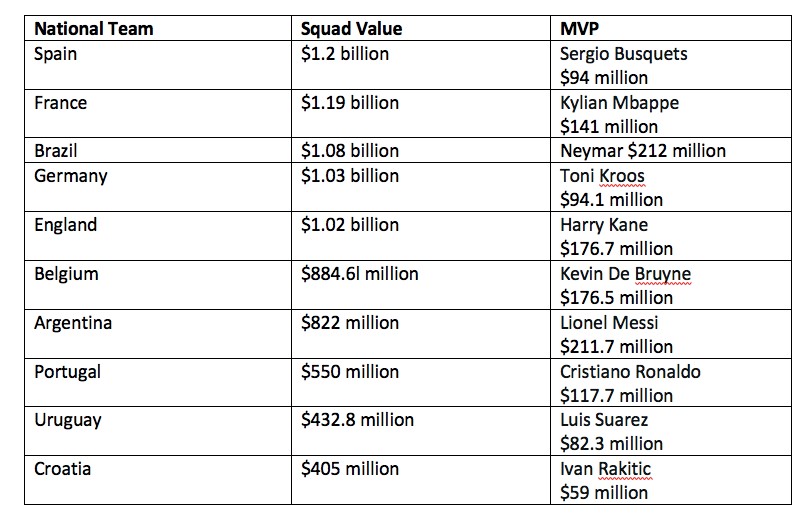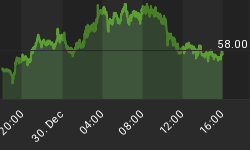Globalization usually starts with America, but not this time: The World Cup has now become the world’s definitively biggest sporting event, with more than 3 billion people expected to watch the month-long competition.
It’s pushed it way beyond the borders of Europe and South America over the past few decades, and it’s a major money machine, even busting into the United States, where everyone insists on trying to change its name to “soccer”, which it will never be.
It’s become a huge global with money pouring into it from all over the world in amounts that would have been unheard of just a few decades ago.
Die-hard Brazilian player Pele, regarded by many as the greatest player of all time, signed on in the 1970s with the New York Cosmos for a salary of $1.4 million per year. It was an enormous wage for a footballer at the time.
Today, that sum is peanuts. The 2018 FIFA World Cup in Russia features the sport’s biggest and highest-paid stars, and just three of them--Lionel Messi, Cristiano Ronaldo and Neymar Jr.--earned a combined $309 million over the past 12 months from salaries, bonuses and endorsements.
But this isn’t necessarily an even playing field.
By comparison, all of Japan’s players combined are worth $80 million, while Sweden’s national team is worth $120 million. Iceland’s goalkeeper also works as film director, one defender is part-time fisherman and the manager is dentist.
A look at the value of the top 10 national teams, compared to what the most valuable players is telling indeed:

(Click to enlarge)
Both Messi’s Argentina and Ronaldo’s Portugal were eliminated from the competition on June 30th and only Neymar and Kane moved forward. Related: Cash Is King Once Again For Wealthy Investors
However, so far, the most shared and commented moment of the world cup wasn’t a brilliant goal or some other technical beauty of the game itself, but the drama that ensued in a match over Neymar Jr. who came under fire for overreacting with “dives, flicks and tears”.
Fans aren’t upset at the unfathomable amount of money floating around—they’re upset over superstar drama.
But it’s not just the fans; it’s also the private football clubs who end up footing a massive expense bill for all these players who then hit up the World Cup representing their national teams.
Some players have even taken measures to insure their body parts, and football clubs—who pay the players—aren’t happy that their athletes are playing for their national teams.
Prize money for the winning team totals $38 million, while runners-up get $28 million and third place is worth $24 million. The 16 teams eliminated after the group stage each receive $8 million.
But while the private clubs are all about money, the World Cup—from the players’ perspective is not. When it comes to the World Cup, there are other motivations. There’s patriotism, and there is recruitment—the possibility of getting into an even better club. Playing for the World Cup earns each player about $22,000 per game, which at this point is paltry.
Frenchman Kylian Mbappe announced that he would donate his entire World Cup earnings to charity because he does not believe he should be paid to represent his country. Also, for the past decade, the England national team has been donating their World Cup match fees to charity.
That doesn’t mean no one’s getting anything out of this. FIFA is set to earn more than $6 billion in the four-year cycle tied to this year’s World Cup, with an estimated profit exceeding $100 million, up 25 percent from the previous tournament.
There is no official data for the ongoing tournament, but for the 2014 World Cup, official sponsor and supplier Adidas sold more than 8 million country jerseys and 14 million balls. The firm expects to top the total this year.
Related: Venezuela Gets A $5 Billion Lifeline
Also for the 2014 tournament, American Spanish-language broadcast television network Univision earned $177 million from ad revenue; ESPN generated $65 million; and ABC, $47 million.
With as many as 3.2 billion people expected to watch the tournament until it ends, broadcast revenue is expected to rise to $3 billion.
So while the World Cup itself might not be the biggest sports money machine out there, the private football world is, and the World Cup is increasingly benefitting.
By Damir Kaletovic for Safehaven.com
More Top Reads From Safehaven.com:

















